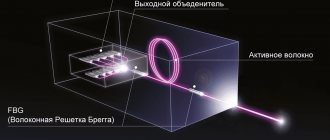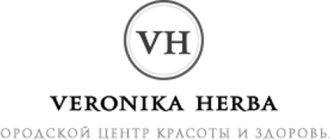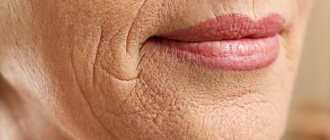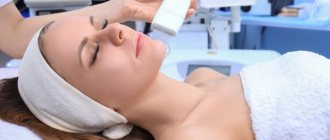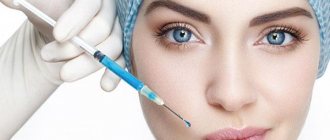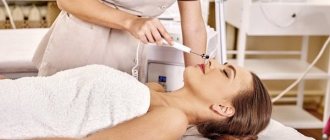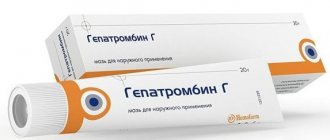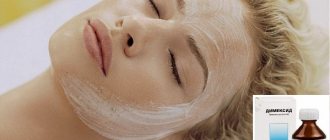Young, healthy skin always causes admiration; they say about such skin – beautiful! Preserving beauty for as long as possible or restoring youth and health to the skin - these are the main goals of cosmetology, where the search for new ways to achieve them never stops. At the same time, today the tasks of optimizing approaches come to the fore: maintaining a balance, first of all, between effectiveness and safety, that is, the ratio of the degree of aggressiveness of the effect with the duration of the effect, the maximum severity of the final result with a minimal risk of complications, is at the forefront. And of course, the balance of effect and price: after all, the game should be worth the candle...
To correct age-related facial changes, patients increasingly prefer to choose minimally invasive methods that do not require leaving society. In addition, in the minds of consumers, the clear association of laser techniques with resurfacing, and therefore with long-term rehabilitation and seasonal restrictions, is becoming a thing of the past. Modern laser systems in the hands of a competent specialist can offer comfortable procedures that can be performed even in the summer.
Fotona laser systems (Slovenia) have many patented techniques that cannot be implemented on other lasers.
Today we would like to talk about the 4D rejuvenation technique. This method consists of a combined effect on facial tissues and ligaments with a neodymium laser with different access to the desired area. Treatment occurs both on the skin and on the oral mucosa.
Erbium laser: device and principle of operation of the device
The laser mechanically heats a small selected area. The water inside the cells boils in a split second and turns into a vapor state. The pressure in the upper part of the epidermis increases, due to which dead particles are quickly discarded.
Also, the thermal effect destroys and displaces pollution of any kind. Without clogged pores, the skin is able to cleanse and restore itself, and the renewal process is accelerated. After the procedure, rehabilitation takes about 1-2 weeks. The recovery process lasts approximately 4 months. Efficiency is assessed at the end of regeneration.
Tool design:
- working tools made of quartz glass mixed with erbium;
- transmitter for generating radiation;
- amplifiers for light beam efficiency;
- hook-shaped insulators so as not to lose the power of the luminous flux at the exit of the device;
- frame.
The tool is reliable and can work for decades without maintenance or repair. The advantage of using an erbium laser is that it only affects the top layers of the skin. This guarantees no injuries and quick recovery after the procedure.
The tool can also be called universal, since it exfoliates not only dead cells, but also eliminates impurities and clogged pores.
How is leather treated?
In order for the laser resurfacing procedure to be as effective as possible and the risk of complications to be minimized, the session must be approached with all responsibility. At a preliminary consultation, patients may be recommended the following medications:
- antibiotics;
- antiviral drugs;
- creams and emulsions with a high content of retinol, glycolic acid and tretinoin.
Correct preliminary actions contribute to easier healing and a shorter rehabilitation period. Also, thanks to advance preparation, the likelihood of pigmentation on the skin and other undesirable effects from laser exposure is reduced.
The erbium laser resurfacing session itself takes place in several stages:
- A moisturizing cream containing an anesthetic is applied to the surface of the treated skin. Local anesthesia makes the procedure more comfortable.
- Special protective glasses are put on the client's eyes to protect the eyes from the effects of laser radiation. If a patient undergoes eyelid blepharoplasty using an erbium laser, special plates are used that protect the retina and cornea of the eyes.
- Next, the cosmetologist treats the skin with the laser itself. The upper keratinized layer of cells is removed and minor skin defects are corrected. The duration of the manipulations depends on the area of the treated area and the severity of the problem that needs to be dealt with during one session. Thus, the time range varies from 5 minutes to an hour. If it is necessary to eliminate senile wrinkles, the number of laser passes in the defect area is strictly limited, regardless of whether it was possible to completely get rid of the defect. In addition, the impulse value is adjusted according to the skin type and area of exposure. The required parameters are monitored electronically.
- At the final recovery stage, ointments containing panthenol are applied to the laser-treated areas. This is necessary in order to soothe the skin and speed up its healing.
Be sure to read: Weight loss points: how to lose weight with acupuncture
In what cases is laser resurfacing used?
Using an Erbium laser you can get rid of problems such as:
- Benign neoplasms (moles, papillomas, warts, wen);
- Pigmentation (birthmarks, freckles);
- Wrinkles and sagging skin;
- Acne marks;
- Scars and scars after injuries and operations;
- Stretch marks;
- Tattoos;
- Poor circulation;
- Keratosis.
Devices
The procedure requires special equipment. There are several types of it:
- "Contour TRL" from (USA). The device allows you to separate the stages of evaporation of cell layers and cauterization. Their parameters are adjusted separately, so damage during Contour TRL grinding is minimal and recovery is faster.
"Contour TRL" from (USA)
- "Fotona Er:YAG" from (Slovenia). With its help, 14 types of laser techniques are carried out.
- "MCL 31 Dermablate" from "Asclepion Laser Technologies" (Germany). Using this device, fractional skin rejuvenation is performed.
- "TOPLASER" from "Beijing Toplaser Technology" (China). This device is the most affordable, which does not interfere with its effectiveness.
The American device is considered to be the highest quality of all. It makes it possible to protect yourself from bleeding during the procedure, since it does not injure the vessels. This means that the risk of complications when using it is lower. But no matter what device is used, the settings of its operating parameters must be strictly individual.
Preparatory stage
Erbium laser is performed without special preparation. In some cases, the skin is treated with ultrasonic peels and subjected to hardware moisturizing. For patients with dark skin color, it is advisable to use products containing 2-4 percent hydroquinone 14 days before the procedure.
Erbium fractional laser is used for the purpose of rejuvenation in the absence of excess skin. Before the procedure, a facelift is performed, and three months later, resurfacing is performed, which smoothes the surface of the epidermis, effectively removing the formed wrinkles and scars.
Before eliminating post-acne, antiseptic drugs are used for prevention. This approach is especially effective if there are fresh acne craters on the face. For inflammatory processes, a course of antibiotics is prescribed 3-5 days before laser resurfacing. Before the procedure, local anesthesia is given.
An erbium laser after a course of treatment with drugs containing retinoids is used no earlier than 6-8 months later.
The psychological mood of the patient plays an important role. It is important to understand that not all wrinkles may disappear after a cosmetic session. Also, after scars and post-acne, white marks may form on the skin. The procedure does not guarantee the absence of acne in the future and does not prevent the formation of new post-acne scars.
What types of procedures is it intended for?
Erbium laser in cosmetology, reviews of which are mostly positive, is intended to work with the upper part of the skin. Thanks to the gentle and shallow effect, the surface of the epidermis is rejuvenated.
The device helps combat the following:
- complete removal or smoothing of scars;
- renewal of upper cells. If the skin gets dirty and is often exposed to negative influences such as wind, dust, high humidity or dryness, masks will not help quickly eliminate the problem. The same thing is observed during the natural aging process. Laser exposure exfoliates dead skin cells, removes dirt from pores, and cleanses areas with hair follicles;
- normalization of blood circulation. Thanks to this, bruises and swelling under the eyes go away;
- restoration of collagen - a substance that connects cellular tissues with each other, making the skin elastic and youthful. Over time, it ceases to be produced in the required quantity, which is why wrinkles appear;
- fight against pigmentation (hereditary and age-related).
Erbium laser in cosmetology is indicated in the presence of pigmentation.
Laser exposure consists of delivering a beam of light in a short period of time. Because of this, the body begins to develop immunity to damaging factors - ultraviolet radiation, high humidity, winds.
Don't miss the most popular article in the section: Hyaluronic acid in tablets. Benefits, how to take, reviews from doctors and effectiveness.
Let's remember a little anatomy
Rice. 1. Ligamentous apparatus of the face.
Not only does the skin age, on which wrinkles and other visible signs of aging appear, but the ligamentous apparatus also changes. And it is changes in the ligamentous apparatus of the face that play a key role in the complex of aging processes. Understanding the anatomical and physiological features contributes to an adequate and effective choice of methods for correcting age-related changes. In order to improve collagen synthesis, it is necessary to deliver a thermal impulse directly to the deep sections, to ensure warming of the ligaments, affecting those structures that penetrate all layers of the face (Fig. 1).
New opportunities are opened by the use of the SP Dynamis laser and one of the stages of the 4D rejuvenation procedure through the oral cavity.
Advantages and disadvantages
Erbium laser in cosmetology (reviews from doctors prove this fact) acts very carefully.
Its advantages:
- impact only on the selected area. The laser diameter is 2 microns, which allows it not to affect adjacent healthy tissues;
- shallow penetration of 5 microns contributes to superficial renewal, but the launch of a person’s own regenerative properties;
- almost no contraindications;
- easy tolerability. Only some particularly sensitive patients are given local anesthesia;
- the effect is on the upper tissues, which do not have nerve endings. Therefore, you can work with thin skin, including the area around the eyes.
The procedure has only one drawback. Like any intervention in the stable functioning of the body, the laser can cause complications. In 1% of 100 it is impossible to predict them.
The essence of the method
At the MedicCity clinic you can undergo skin resurfacing using the Dermablate Effect erbium laser.
During the procedure, targeted layer-by-layer evaporation of skin cells occurs. The effect is on obsolete tissues and does not affect healthy ones. Since skin cells are constantly reproducing, this promotes the growth of renewed, youthful, healthy skin.
The depth of laser resurfacing is determined by the degree of age-related changes and is selected individually.
The procedure at MedicCity is carried out by experienced cosmetologists who accurately measure the depth of exposure of the laser beam. The special cooling function that the equipment is equipped with makes the procedure more comfortable.
Laser resurfacing. Photos before and after
Who are laser sessions indicated for?
Laser cosmetology sessions are used in the following cases:
- the presence of shallow wrinkles;
- loose skin. Such changes always come with age (they affect not only the face, but also the neck and décolleté);
- skin stretch marks (appear with rapid weight loss);
- an area where there used to be pimples, but now they have turned into scars;
- birthmarks or age spots;
- small and shallow tattoos;
- fat deposits in different areas (mainly under the eyelids, since other means cannot get rid of them).
The duration of each procedure is assigned separately after research and determination of the individual characteristics of the skin. It takes 30-90 minutes. The number of procedures is also determined by the properties of the epidermis and the complexity of the problem areas.
Indications for laser resurfacing
The procedure solves a huge number of dermatological and aesthetic problems, among which are the following:
- the presence of scars, scars and stretch marks;
- increased oily skin, acne and post-acne;
- presence of circles under the eyes;
- distinct wrinkles around the eyes, on the forehead and near the lips;
- noticeable pores on the face;
- sluggish, dull skin;
- the appearance of age spots and freckles.
In addition, laser resurfacing is effective in removing moles, papillomas and warts.
Contraindications
Despite the delicacy of the procedure, erbium laser is not always indicated.
First, a medical examination is carried out to determine whether the patient has any contraindications:
- cancer diseases;
- pregnancy, breastfeeding;
- dark skin (including temporary effect after sunburn);
- skin diseases in the active stage (herpes, ulcers or acne with abscesses);
- varicose veins (when you need to work on your legs);
- diabetes;
- problems with blood clotting;
- mental illness, unstable behavior;
- hyperfunction of the thyroid gland;
- predisposition to slow wound healing and stopping bleeding;
- At the time of the procedure, an active stage of bacterial or viral diseases is observed.
Also, the laser cannot be used for six months after using medications with retinoids (Roaccutane, retinol solution, Lokacid). Such medications are aimed at treating and restoring the skin. Retinoic acid destroys the top cells, and additional laser destruction can damage the skin beyond repair.
conclusions
As a practicing specialist, I would like to note the high efficiency of the “4D rejuvenation” procedure; I believe that this is the only technology that gives such a pronounced result in a given patient in such a short period. The results of working with FOTONA laser systems clearly demonstrate the effectiveness, safety and high demand among patients of clinics and cosmetology centers, which are practically incomparable with other systems and devices of this kind. One device combines several different systems, allowing, with proper selection, to achieve fantastic results comparable to the results of plastic surgery, and to see satisfied and happy patients.
The 4D rejuvenation technology is extremely convenient for the patient in terms of rehabilitation, when several years of skin aging can be corrected in one hour. In the modern world, the trend is minimally invasive, fast, safe, and the laser system fully meets these requirements.
Also, the FOTONA laser system is safe for both the specialist and the patient. With a timely patient visit to a cosmetologist, you can forget about the manifestations of aging of the skin of the face and body. And an important fact is the durability of the achieved results for up to several months and years, when course visits and maintenance procedures are prescribed. The investment is fully justified in the form of pleasant emotions and confidence in yourself and the future.
Carrying out cosmetic procedures with erbium laser
The purpose and execution of the operation is divided into several stages, discussed in the table:
| Procedure | What they do in the process | What is required from the patient |
| Preparation | They collect tests and find out the presence of indications and contraindications. The time depends on the speed of the laboratories. | Submit a medical record to check for the presence of chronic diseases, the frequency of entry into the active phase. |
| Consultations with a dermatologist and cosmetologist | Doctors are obliged to talk about risks and possible complications. One consultation (30-40 minutes) is enough. | Give (in some clinics sign) permission to perform the procedure. They also prove the fact that they are familiar with complications, and sometimes sign a waiver of claims against the clinic or a specific doctor if they arise. |
| Computer modelling | Laser treatment points are selected first on a computer, then they are marked on the patient’s skin. With modern equipment, it can be done in a few minutes. | Follow the recommendations of specialists. |
| Executing the procedure | Sometimes one treatment is enough, but most often cosmetologists prescribe several procedures. Their frequency and quantity are selected depending on the individual characteristics of the patient (30 minutes - 1.5 hours). | Listen to the sensations to stop the operation if signs indicating complications appear. |
Regardless of the number of operations prescribed, after each there is a rehabilitation period.
Performing a 4D laser rejuvenation procedure
Let's consider the technology from the point of view of step-by-step impact (Fig. 2).
Rice. 2. Four steps in the 4D rejuvenation procedure.
1st step – SmoothLifting
We begin the procedure by exposing the skin to Er:YAG laser radiation (in non-ablative thermal mode using fractional technology) from the oral cavity - on the mucous membrane of the buccal and perioral areas.
This technology, called SmoothLifting, is a new and, in our opinion, promising approach to skin rejuvenation. Let's look at it in more detail.
In 2011, reports appeared in the literature on the use of Er:YAG laser energy (2940 nm) in non-ablative thermal mode for the treatment of stress urinary incontinence (SUI) in women. The effectiveness of this treatment method is due to the immediate contraction of collagen fibers in response to heat and the stimulation of neocollagenogenesis and neoangiogenesis. As a result, the tissue in the treatment area gradually contracts, improving support for the bladder neck and urethra.
The results of treatment of NMPN have prompted companies to develop a technique for facial skin rejuvenation based on the impact of such laser radiation on the oral mucosa. The use of ultra-long packet pulses of an Er:YAG laser (0.25 s) at a fluence of 0.8–2.5 J/cm2 made it possible to obtain a coagulation mode that provides a quick and effective reduction in the area of the treated tissue (up to 15%) without compromising the integrity of the epidermis .
Rice. 3. Directions of laser passes when performing SmoothLifting.
The long-pulse laser beam penetrates to a depth of up to 400 μm (0.4 mm), and uniformly controlled heating of tissue occurs to a temperature of 60–63 ° C, optimal for immediate collagen contraction: the intermolecular cross-links of the collagen triple helix are shortened, the fibers are reduced by two-thirds their lengths before the procedure. Preservation of tissue integrity is guaranteed by special selection of pulse duration and intervals between them. The skin lifting effect becomes noticeable almost immediately. (This is why the SmoothLifting procedure is often called express rejuvenation.)
In addition to the instantaneous reaction of collagen contraction in the tissue, the processes of neocollagenogenesis are launched. As a result, the collagen framework of the skin is strengthened by new, young collagen, the skin becomes firm and elastic.
Starting the 4D rejuvenation procedure with the SmoothLifting technique, we additionally get the opportunity to diagnose how effective thermal loads are for the skin of a particular patient, what the skin’s own ability to contract is. That is, it gives us valuable information that will allow us to further adapt the procedure to the characteristics of the skin and more accurately predict the result.
The effect of smoothing wrinkles when using SmoothLifting technology is comparable to the effect of introducing dermal fillers: wrinkles are pushed out from the inside, filling the skin folds of the middle and lower thirds of the face.
The Smooth mode (from the English smooth - soft, smooth) does not allow the tissue to overheat, since a packaged impulse with controlled energy is applied, which allows you to control the temperature increase without values critical for the skin. Therefore, it can be used on all areas of the face and body, including the skin over the mammary glands and thyroid gland (décolleté and neck areas), which cannot be affected, for example, by a neodymium laser, since its energy penetrates much deeper (up to 4 mm).
2nd step – Frac 3
The second step is designed to use Frac 3 - a non-ablative rejuvenation technique through exposure to a short-pulse Nd:YAG laser at a depth of 2-3 mm of the skin. The short name “Frac 3” refers to the use of fractional non-ablative 3D skin treatment technology. The laser emits short pulses of high peak power to create foci of fine-point coagulation.
Among all non-ablative sources of laser radiation, the Nd:YAG laser probably occupies a leading position. This is due to the long wavelength - 1064 nm, which lies in the optical window, allowing the radiation to penetrate deep into the skin. The action of this wavelength is based on homogeneous photothermolysis.
When using Frac 3, a three-dimensional fractional structure is created inside the dermis with islands of damaged tissue located mainly in places where the optical density changes (Fig. 4). Measurements show the appearance of isolated "fractional" hot islands within the skin.
Rice. 4. Laser-induced islands of damaged tissue: a) standard uniform laser exposure; b) standard two-dimensional fractional impact; c) new three-dimensional laser effect Frac 3.
When using traditional non-ablative fractional laser irradiation, for which water is the chromophore, numerous microthermal zones are surrounded by intact healthy tissue, therefore, there are sufficient resources for rapid and effective skin repair. However, this irradiation creates the shape of only a two-dimensional matrix, and the resulting “columns” under the irradiation areas are damaged unevenly. In addition, there is no selectivity in relation to local skin defects, since the laser beam removes all tissue falling within the area of its influence. Finally, this method requires a special fractional beam delivery device.
When using Frac 3, only defects and irregularities of the skin are exposed to thermal damage (“twists” of collagen and modified vessels, since the chromophores for this radiation are collagen and the hemoglobin family), while healthy normal skin is not affected.
Let us clarify this important point.
If we need to selectively influence specific tissue structures or chromophores (collagen fibers, hair follicle, skin vessels), then the laser wavelength must penetrate deep into the tissue and reach the target structure containing these chromophores.
The duration of the laser pulse must be selected depending on the thermal relaxation time of the target. During prolonged laser irradiation, much of the deposited heat may diffuse out of the target structure, resulting in uncharacteristic thermal damage to adjacent structures. On the contrary, a sufficiently short laser pulse, limiting the thermal effect to the target, creates a maximum temperature difference between it and neighboring structures. The use of a Nd:YAG laser wavelength (λ=1064 nm) to irradiate skin defects with adjustable laser pulse duration depending on the cooling time of these defects became the basis of a new minimally invasive skin rejuvenation method, Frac 3.
The fractional islands of damage formed as a result of exposure to Frac 3 are not limited to a two-dimensional matrix of columns, but are distributed in three-dimensional space throughout the entire volume of the skin, which makes it possible to contract the skin due to the effect along the entire depth of the chromophore. In addition, no additional special optical device is required, which increases the cost-effectiveness of the skin rejuvenation procedure (Fig. 4).
3rd step – Piano
The third step is “gentle”, calm (piano) heating of the skin with radiation from a 1064 nm Nd:YAG laser at all levels: from the stratum corneum of the epidermis to the reticular layer of the dermis and hypodermis. Ultra-long Nd:YAG pulses are used in the second range (0.3–60 s), while at the same time the pulse power parameters are reduced to less invasive values - 80 W. The tissues are heated to a temperature of 40–42 °C, and no damage to the epidermis occurs. The same mechanism of moderate homogeneous photothermolysis is involved, provoking the synthesis of new collagen.
The duration of pulses in Piano mode is significantly longer than the thermal relaxation time of the epidermis; heat is transferred from the chromophore to the surrounding tissues (battery effect). Therefore, radiation in this mode is safe for tissues that are located deeper; the thermal effect on the epidermis is minimal.
So, the action of the Nd:YAG laser in Piano mode is aimed at general, uniform heating of a large mass of skin, due to which the connective tissue is restored with the effect of skin tightening.
Step 4 – light cold laser peeling
And finally, the last step is the use of an Er:YAG laser in cold peeling mode. Cold ablation is a physical phenomenon of evaporation of soft tissue to the depth of penetration of a laser beam with a minimal (5 μm) coagulation zone. The implementation of this phenomenon is possible only when using an Er:YAG laser with a pulse duration shorter than the thermal relaxation time of the surface layers of the epidermis (for example, pulse duration 100 μs, thermal relaxation time of the stratum corneum of the epidermis 250 μs) and an energy density greater than the ablation threshold of 2.5 J/ cm2).
Light surface polishing of the skin eliminates imperfections, resulting in a healthy glow to the skin, creating the effect of velvet skin. The procedure allows you to keep the epidermis intact; the laser action is aimed at heating the papillary layer of the dermis for the purpose of sebum regulation and narrowing pores (superficial peeling effect).
Laser rejuvenation Fotona 4D can only be performed on Fotona systems (Slovenia).
Rehabilitation
A carefully performed operation is half the battle. It is necessary that patients also follow the instructions during the rehabilitation period. It is 4-5 days.
Immediately after the procedure:
- be under the constant supervision of relatives or doctors for a day;
- 2 days of bed rest with two pillows (so that inflammation subsides faster);
- cold compresses;
- taking medications or using external products prescribed by a cosmetologist.
Other tips:
- take a warm shower twice a day without a washcloth so that the exfoliated skin drains without mechanical impact;
- Children's shampoos are used to wash hair. If they come into contact with the skin, they do not have an aggressive effect and will not harm;
- yellowness around the eyes is normal after the procedure. You cannot try to scrub it off;
- When peeling begins on the 3-4th day, you cannot tear off pieces of skin, otherwise scars will remain. The body must cope with the process on its own.
Cetaphil moisturizers are used during and after the rehabilitation period. You can consult a dermatologist to choose a budget drug. You can use decorative cosmetics only after 7-14 days. The exact date is set by a specialist.
How does a laser work?
Using erbium dioxide (hence the name), the device synthesizes and directs high-energy microbeams of light to the affected area. Under the influence of powerful radiation, moisture begins to evaporate from the skin (this process is called vaporization). As a result, external tissues begin to renew themselves - blood circulation increases, as a result of which the complexion improves, collagen synthesis increases, which helps the skin regenerate faster. Beams of light have a peeling effect - that is, they smooth the surface of the skin, polish it and exfoliate dead particles of the epidermis. As a result, the skin “breathes” and is saturated with essential nutrients.
Possible complications
Complications appear only in 2 cases: neglect of contraindications and refusal of safety precautions during the procedure and during the rehabilitation period.
Can appear:
- swelling;
- redness;
- burns;
- scarring;
- dark spots;
- skin rash;
- itching and burning.
Such complications almost always appear after the procedure, but they are mild and disappear during the rehabilitation period. But sometimes they stay forever if you don’t follow the rules. It is necessary to use masks and creams that accelerate cell restoration. You should also not go outside without wearing wind and ultraviolet protection.
Don’t miss the most popular article in the section: Plasmolifting of the face - what it is, how it is carried out, results, photos before and after the procedure.
Duration of the course of procedures
To begin with, preparation is carried out in 2 stages:
- Within a month, they begin to use creams with photoprotection.
- Superficial peeling is performed within 2 weeks.
No preparatory steps are required before the procedure itself. Exceptions are cases of excessive dryness of the skin - then it is moisturized (if it is too oily, then it is treated with antiseptics).
For normal tolerability of the procedure, local anesthesia is given. If you need to work on a large area, sometimes they operate under general anesthesia. The eyes are covered with special glasses. The exact number of procedures is prescribed after examination and examination of the skin surface. Usually the doctor prescribes 4-6 sessions. The break between them is 3-4 weeks.
How does the procedure work?
Before performing laser facial resurfacing, anesthesia is performed. The eyes are protected with special glasses, the face is removed, and the skin is treated with an antiseptic.
There may be pain during the procedure (many reviews of laser resurfacing speak about this). Heated skin is soothed by the supply of a cold stream of air. The total time spent on treating the entire face is about 2 hours, for partial treatment - approximately 45 minutes.
The face after laser resurfacing will look like after a thermal burn; swelling and pain may be observed. But after a certain time (the period of complete rehabilitation is about 2 weeks), you will be pleased with the result - younger and refreshed skin.
Laser resurfacing is a non-surgical technique and does not cause harm to health. However, if something bothers you (for example, a rash appears), be sure to consult with your doctor, who will help eliminate the unpleasant manifestations.
1 Laser resurfacing
2 Laser resurfacing
3 Laser resurfacing
When is the effect visible?
Erbium laser in cosmetology, reviews of which can mislead patients, is aimed at stimulating the natural processes of the body. Its impact is minimal. It tricks the body into thinking that skin cells are being damaged. Therefore, it begins to renew them faster and restore damaged tissue.
Since the body needs time to start recovery processes, it will take 3-4 days after the procedure before the patient notices the effect. First, the skin becomes covered with a hard film, and a burning and itching sensation appears. But you need to be patient and not try to get rid of the crust mechanically.
You can use products that help the body regenerate new cells. These are restorative creams based on Vaseline. They soften the crust and promote its faster removal.
The peeling process itself is accompanied by itching. When all the dead cells fall off, it will stop. After complete exfoliation, you should stop using Vaseline-based creams to prevent your skin from becoming too oily and your pores from becoming clogged. Regardless of how many procedures are prescribed, the effect is visible after the first one. It improves with each new operation.
What is the reason for this choice and what does it give?
The oral mucosa is rich in water; the loose connective tissue located under the mucous layer is well supplied with blood vessels, which, forming a network, penetrate deeper tissues. The effect of laser radiation precisely through the oral mucosa, taking into account the chromophore, makes it possible to increase the temperature of deep-lying tissues without damaging the mucosa. With the correct choice of radiation parameters and operating mode, you can work safely without causing damage to the oral mucosa or those structures to which heat will be directly transferred, and without reaching a critical temperature that can be dangerous to the underlying tissues.
The Fotona 4D procedure is a technology for non-invasive volumetric reconstruction and tissue volumization.
At what interval are repeated laser courses conducted?
Reviews about the erbium laser in cosmetology are so good that patients want to perform this procedure often. They plan to achieve the perfect result. But the intervals are set not by the desires of women, but by specialists. Resurfacing within one course is carried out at intervals of 3-5 weeks.
It all depends on how quickly the patient recovers and how long his rehabilitation period is. A repeat course is carried out with an interval of at least 10 months after the end of the rehabilitation period after the last procedure. To take a repeat course, you will need to take all the tests again and consult with a specialist.
Application of laser in dentistry
Many patients associate the sound of a drill with pain, so silent dental equipment is constantly being developed. Erbium laser is an excellent alternative and meets all modern requirements.
A light beam of a certain wavelength is capable of silently and painlessly removing microparticles of dental tissue so that the patient does not experience any discomfort.
The laser successfully removes bacteria from tooth tissue and prevents secondary caries from developing under the filling. It provides the formation of a surface that promotes maximum adhesion of tooth tissues to modern filling materials. Local anesthesia may be required if your teeth are sensitive.
Service cost
Erbium laser in cosmetology (reviews depend on the qualifications of the specialist who performed the procedure) is not an expensive procedure.
The final cost is formed based on the following parameters:
- grinding level;
- total number of procedures;
- general anesthesia or local anesthesia;
- neglect of the problem;
- the age of the patient (the older, the more difficult it is to start natural recovery);
- the policy of the clinic where the procedure is performed.
Average prices can be found in the table:
| Procedure | Price |
| Facial rejuvenation | From 7000 rub. |
| Rejuvenation of the neck and décolleté area | From 15,000 rub. |
| Superficial face resurfacing | From 20,000 rub. |
| Medium face resurfacing | From 25,000 rub. |
| Removal of scars and scars (spotwise) | From 3000 rub. |
| Superficial resurfacing of the neck and décolleté | From 30,000 rub. |
| Medium resurfacing of the neck and décolleté | From 35,000 rub. |
| Laser resurfacing of a selected area (for example, when removing tattoos) | From 6000 rub. |
Application of laser in ophthalmology
Modern ophthalmology successfully uses a method of surgical treatment - cataract extraction using a laser. Since the choice of laser was determined taking into account the fact that the lens is surrounded by an aqueous environment, an erbium laser with a wavelength of 2.94 microns was ideally suited for such operations.
With its help, it is possible to destroy the dense core of the cloudy lens and remove the masses using the aspiration-irrigation method.
Reviews about the procedure
Many say that the use of an erbium laser in cosmetology can be considered a major breakthrough in science. Reviews about the procedure are positive. But some say that you should carefully select the clinic where the operation will be performed.
When a specialist approaches patients irresponsibly and does not conduct in-depth analysis and diagnostics to identify possible contraindications, there is a high probability of complications occurring.
Article design: Oleg Lozinsky
Description
Erbium laser radiation is 2.94 microns, this is the wavelength of the mid-pulsed IR range. Penetration into biological tissue is 0.05 mm, this is a purely superficial effect. Such parameters exclude coagulation of blood vessels.
The device is equipped with a cooling system and is successfully used in medicine for:
- micro-resurfacing of the skin;
- skin perforation (blood sampling);
- removal of microparticles of hard dental tissues;
- removal of the superficial layers of the cornea to correct myopia, farsightedness and astigmatism.
